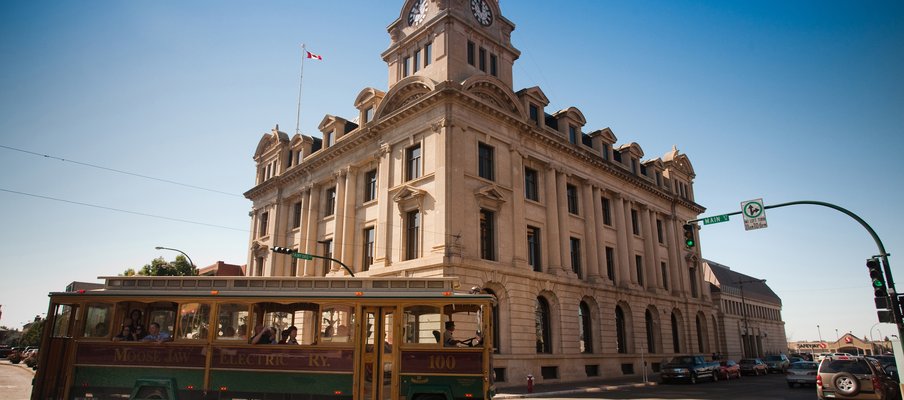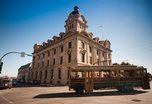Moose Jaw on Track with its Culture Plan

Related Programs

Many cities with checkered pasts do their best to erase and forget the sordid details. Not Moose Jaw. Saskatchewan’s fourth largest city (just a hair behind Prince Albert) revels in its notoriety, proudly calling itself “Canada’s most notorious city.”
That notoriety includes a history of rumrunning, gangsters (Al Capone was reputed to have been a visitor) prostitution, police corruption, the Zoot Suit Riot and the infamous tunnels that, so the legend goes, sheltered persecuted Chinese immigrants as well as bootleggers. Some of this is depicted and celebrated in the city’s famous murals (almost 50 strong). Of course, there’s not much notorious stuff going on in Moose Jaw now – its history has become part of the city’s vibrant culture.
Now, Moose Jaw is attempting to capitalize even further on that culture. With the aid of a Community Engagement and Planning Grant from SaskCulture, the city’s Parks, Recreation and Culture department has embarked on a severalyear project to develop a Culture Plan. Work on it began in June following a green light from City council.
Derek Blais, department director, City of Moose Jaw, explains that the purpose of the Plan “is to develop a strategic approach that integrates the community’s cultural resources into a wide range of planning activities.” Partnering with a wide array of community groups representing arts, cultural, heritage, business, social and environmental sectors, the Plan “will help the city better support cultural vitality, creativity, and economic sustainability.”
The commitment, interest, “and buyin from community stakeholders has been tremendous,” he adds.
The first step was formation of a committee made up of community members representing 14 different organizations including: Moose Jaw Pride, Moose Jaw Residents Against Racism and Discrimination, Wakamow Aboriginal Community Association and New Southern Plains Métis Local #160. During the summer, the committee worked with a paid consultant to gather background data. In the fall it “will begin developing a map of our community’s key cultural assets,” Blais says. The map, he noted,
“will be a great benefit for tourism and economic development in our city, especially as we begin the COVID19 recovery process.”
Many of the committee members were surprised to learn how many cultural assets, resources and organizations there are in Moose Jaw, “and all the opportunities that currently exist,” Blais says. “This has led to many discussions on how these opportunities can be expanded through the collaboration of organizations.”
The fruits of that research will be used to draft a report on the state of culture in Moose Jaw. The goal, Blais says, is to have the Phase 1 research report presented to City Council early next year, and then to move into the “Engagement Phase,” with development of short and longterm strategic goals.
Among the goals of the total project are the enhancement of community pride and “to create greater inclusion among groups that have traditionally faced marginalization.” Blais says. “It is anticipated that the relationships formed through the cultural planning process will greatly improve communication and collaboration between community organizations and enhance community pride.
“One of the comments made at our initial committee meeting that really caught my attention is that ‘Culture and diversity are a fact and inclusion is necessary.’ I personally think this statement will be one of the core values of the committee moving forward.”



